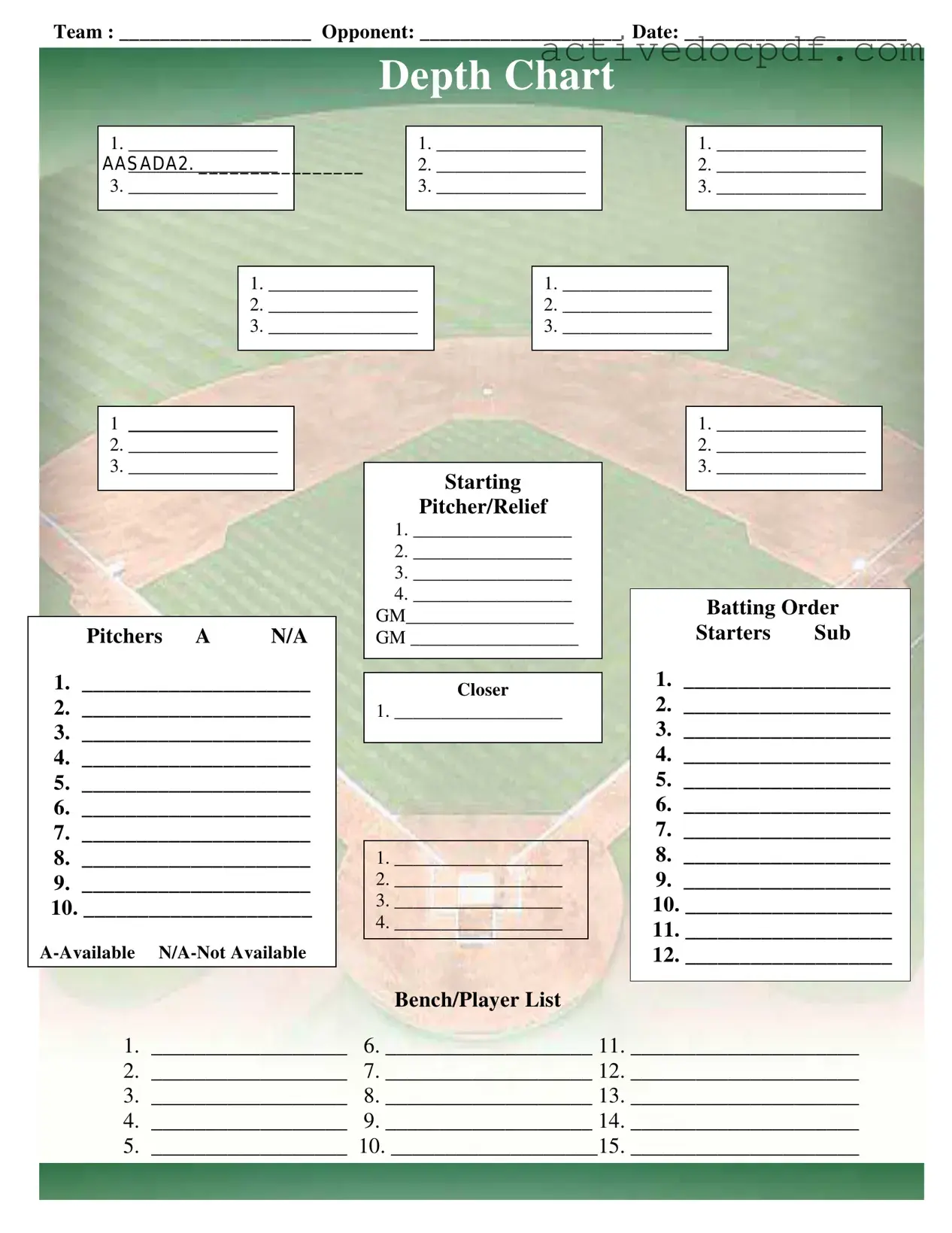- Misconception 1: The Baseball Field Lineup form is only for the starting players.
This form includes sections for both starters and substitutes, ensuring that all team members are accounted for during a game.
- Misconception 2: The depth chart is irrelevant to the game.
The depth chart provides critical information about player availability and positions, helping coaches make informed decisions during the game.
- Misconception 3: Only the head coach needs to fill out the form.
While the head coach typically oversees the lineup, input from assistant coaches and team managers can enhance accuracy and completeness.
- Misconception 4: The form is not necessary if a team has a small roster.
Even with a smaller roster, a lineup form helps maintain organization and clarity regarding player roles and positions.
- Misconception 5: Players can be listed in any order without consequence.
The order of players can affect strategy and game flow, making it essential to follow the designated structure on the form.
- Misconception 6: The form is only for the regular season.
This form can be used for any game, including playoffs and exhibition matches, to ensure consistency and organization.
- Misconception 7: The lineup does not need to be updated once submitted.
Player availability can change, so it is important to update the form as needed to reflect the most current information.
- Misconception 8: The form is not legally binding.
While not a legal document, the form can serve as a record of player assignments and decisions made by the coaching staff, which may be referenced later.
- Misconception 9: All players must be listed on the form.
Only players participating in the game need to be listed. This allows for flexibility in roster management.
- Misconception 10: The form is only for traditional baseball teams.
This lineup form can be adapted for various baseball formats, including youth leagues and adult recreational teams, making it versatile.
